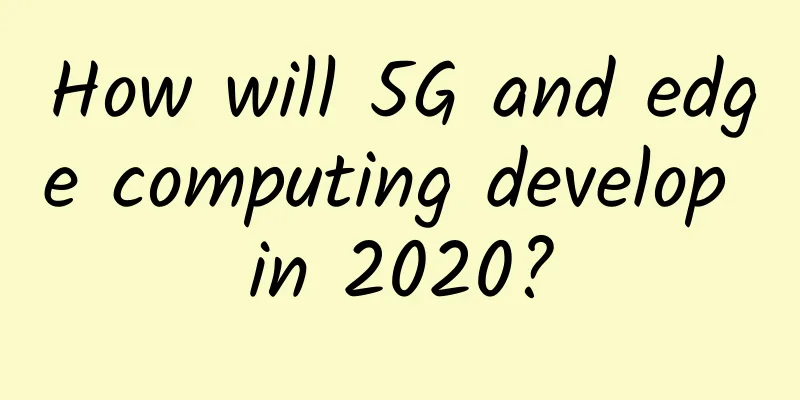About edge computing: Is it right for your business?

|
Like most emerging IT trends, "edge computing" is not a revolution, but more of an evolution. Edge computing has its roots in content delivery and peer-to-peer networks and grid computing at the beginning of this century. However, the continuous improvement of network, computing and analytical technology capabilities and the need to handle massive data growth mean that computing will become more and more important to IT managers in enterprise organizations today. With the expected amount of data being sent to and growing through the network, organizations are developing computing capabilities closer to the edge of the network, where it is generated. The disruption created by edge computing allows local users to generate and perform data analysis in real time. However, despite the growing momentum behind this development trend, the industry remains uncertain about how and when to deploy edge computing. Will edge technology drive industry business decisions in the next few years, or will broader deployment require further advancement and comprehensive long-term planning; which use cases will actually drive the deployment of edge computing, and what challenges still exist; and so on. A series of questions need to be answered.
What is edge computing? For its definition, the broad concept of edge computing appears to have originated nearly 20 years ago, when edge servers were a term referring to servers in a content delivery network (CDN). It has more recently emerged in the context of processing, analyzing, and applying data generated by data sources at the edge of the network, rather than transmitting the data to "core" processing units. The term “edge” is based on processing proximity to data sources and where analytics occur, so it covers a range of possible uses. Vast amounts of data from Internet of Things (IoT) devices, mobile devices, and networks, each with different processing requirements and priorities, will continue to be generated. This shift will emphasize the importance of where computing occurs, requiring smaller, more flexible processing units closer to users. This may take the form of distributed micro data centers with local network access and interconnection points, essentially forming a distributed cloud service. What pushes us to the edge? The force behind the upcoming growth in data transmission is the result of the increase in computer-to-computer communications and IoT devices. As a result, a variety of sensors and processors can create and transmit large amounts of data information. At the same time, the market is also increasing investment and development in artificial intelligence and augmented reality, drones, and automated transportation systems - all of which are driving the development of edge computing. In 2015, the Cisco Cloud Index found that approximately 90% of the data created globally had been generated in the previous two years. The index also predicts that monthly Internet Protocol (IP) traffic will continue to grow at a compound annual growth rate (CAGR) of more than 100% from 2014 to 2019. At the same time, the number of Internet users is expected to grow at a CAGR of 7% per year, and the number of connected devices will grow even faster, at a CAGR of 11.4%. Over the same five-year time span, video data transmission is expected to grow by 80%. To put these numbers into perspective, as of 2016, there were approximately 3.4 billion people active on the Internet. YouTube users download 400 hours of new video every day, Instagram users like 2.5 million photos every minute, and Facebook users share 3 million posts every minute and like more than 4 million posts every minute. Additionally, approximately 4 million Google searches are conducted every minute, more than 200 million emails are sent every minute, more than 400,000 apps are downloaded from the Apple App Store, and 277,000 tweets are sent every minute. In financial terms, Amazon sells approximately $80,000 worth of goods and services every minute of every day! The combination of consumer and technology factors creates a more complex set of drivers that vary widely across industries and geographies. In general, the three major drivers that are driving us toward edge networks are as follows:
Edge processing in enterprise business As with any other IT trend, business and technology professionals want to know how these new technological advancements will help them optimize operations. However, edge computing may not be right for all businesses, at least not yet. The adoption of edge computing and applications will ultimately depend on how well these technologies are aligned with business goals and whether the enterprise has the resources to effectively implement, manage and monetize them. There are several industries that will particularly benefit from edge computing:
Develop an edge strategy Some companies have adopted an "all-in-one" approach to the Internet of Things and the edge, although they should be mindful that some industries that have been slow to adopt are still busy with cloud computing. The trend from centralized and cloud computing to distributed edge computing requires careful consideration to determine the best balance between convergence and disaggregation for each use case. For enterprises that are adopting edge computing, developing a comprehensive strategy will include five main components:
Notes on edge operations Establishing edge computing capabilities in an enterprise is only the first step in implementing this technology. Long-term success will depend on the comprehensive development of operational operations, security and maintenance requirements, as well as integration with IT and communications providers. As the demand for edge computing continues to grow, the roles of all parties must be clearly defined and data must be prioritized in the network. Despite the obvious benefits of edge computing, there are still some factors that should be considered. Security and privacy are the main challenges that need to be addressed. How data is generated and processed, as well as ownership of data, must be defined. Concepts of criminal or civil liability may become complex. For example, who will be held responsible when a self-driving car crashes due to programming flaws? What impact will data protection requirements have? What about edge innovation, imitation or regulation? Analysts also wonder when the growing number of data-producing devices will create a network that reaches a tipping point and overloads. Software-defined networks, 5G technology, and edge-to-edge communications will continue to evolve. Interference and bandwidth demands in the radio environment will place demanding demands on transmission networks. Traditional macro networks will need to be supplemented by adding small cells. Resilience must also be considered when discussing edge computing. It raises a variety of questions: What is the impact of a unit, source, or unit failure in an edge processing unit? How will it affect connected units and shared programs? How can systems that rely entirely on fluid networks protect themselves from cyberattacks? How do capacity and latency coexist, and how should networks be prioritized? The answer seems to be that resiliency will depend on what is being delivered, where it is regulated, the end-user experience, and cost/revenue metrics. As edge computing continues to grow, the shared languages that support multiple edge systems, multiple platforms, and runtimes will grow and need to improve. The protocols that make systems and networks work together will also need to evolve. Industry leaders are already developing IoT gateways and routers that can support edge computing, and software like Apache Spark is responding to the evolution of the industry's needs by clustering and running various patterns, writing to disk when needed. The combination of these inflection points and those small development milestones will produce significant changes. Understanding and preparing for edge computing will require consideration of many aspects, including mobility and security. Holistic planning can help ensure that requirements are met for a system that can identify and communicate with edge devices and users. |
<<: What is blockchain and what impact does it have on data centers and cloud computing?
>>: Future development and current progress of China's Internet of Things industrialization
Recommend
ADX application delivery ensures your business continuity and improves your access experience
The purpose of IT informatization is to improve t...
Have you fallen for the rumors and scams about 5G?
Since the birth of mankind, cutting-edge technolo...
Huawei's cloud computing efforts drive urban cloud computing industry upgrades
[51CTO.com original article] Entering 2017, the r...
Casbay: Malaysia VPS monthly payment starts from $9.59, Linux/Windows optional, 100M unlimited traffic
Last month, I shared information about Casbay and...
What is in the Http Header?
The author has developed a simple, stable, and sc...
Wi-Fi Alliance launches next-generation WPA3 security certification program
[51CTO.com original article] On June 26, the Wi-F...
Eight data center technologies verified in 2015
2015 was a year in which new technologies matured...
LOCVPS recharge 300 yuan in June and get 30 yuan, 20% off Hong Kong/Korea/US/Australia VPS monthly payment starts from 29 yuan
LOCVPS has launched this year's 618 promotion...
How can you explain in simple terms the difference between TCP/UDP protocols and HTTP, FTP, SMTP and other protocols?
Let's first assume that there is no TCP, or e...
What can digital twins bring to wireless communications?
Twins, that is, identical twins. Since two people...
spinservers promotion: San Jose 10Gbps bandwidth server from $99/month, Dallas from $89/month
spinservers has launched a new promotion this mon...
RAKsmart: Dedicated servers from $30/month, VPS hosts from $0.99/month, 40G high-security servers from $99/month
At the end of last month, we shared some of RAKsm...
my country has built the world's largest 4G network
[[181278]] On January 6, the Ministry of Science ...
[Black Friday] Zgovps: $12.9/year-1GB/20GB/2TB/Japan IIJ/Germany/Los Angeles AS4837, etc.
Zgovps also released a promotion during this year...
What is CDN? A detailed explanation of CDN in one article
[[254871]] In today's mobile Internet era, mo...









